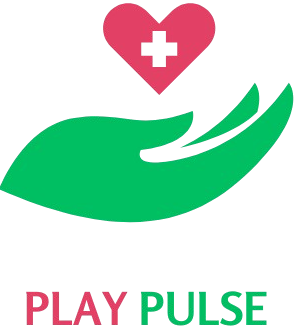Website architecture is a fundamental part of making a drawing in web-based presence. It includes joining stylish standards with client focused methodologies to make sites that are outwardly engaging as well as practical and viable. This article digs into the basics of https://rychle-hubnuti.net/ website architecture, investigates latest things, and thinks about the fate of this unique field.
Understanding Website architecture
Website composition envelops different components that add to the general look, feel, and usefulness of a site. It includes both the visual and intuitive parts of a site, meaning to make a consistent and charming experience for clients. Here are the vital parts of website composition:
Client Experience (UX) Plan:
UX configuration centers around upgrading the general experience clients have while interfacing with a site. It includes:
Route: Making a coherent and natural way for clients to track down data.
Convenience: Guaranteeing that the site is not difficult to utilize and comprehend.
Content Design: Putting together satisfied in a way that is clear and open.
Visual Plan:
Visual plan manages the feel of a site. It incorporates:
Typography: Choosing text styles that are neat and convey the right tone.
Variety Plan: Picking colors that supplement the brand and further develop clarity.
Symbolism: Utilizing excellent pictures and illustrations to upgrade the client experience.
Responsive Plan:
Responsive plan guarantees that a site functions admirably across different gadgets and screen sizes. Key procedures include:
Adaptable Formats: Planning designs that adjust to various screen sizes.
Versatile Pictures: Guaranteeing pictures scale accurately on different gadgets.
Media Questions: Applying various styles in view of gadget attributes.
Openness:
Openness guarantees that sites are usable by individuals with handicaps. This includes:
Alt Text: Giving text portrayals to pictures.
Console Route: Ensuring clients can explore the site utilizing a console.
Variety Differentiation: Utilizing variety plots that are discernible for clients with partial blindness.
Execution Improvement:
Improving a site’s exhibition is significant for client fulfillment and web crawler positioning. Key practices include:
Picture Enhancement: Lessening picture record sizes to further develop load times.
Effective Coding: Composing spotless, productive code to upgrade site speed.
Reserving: Carrying out storing procedures to further develop load times for bringing visitors back.
Latest things in Website architecture
Moderation:
Moderate plan stresses effortlessness by utilizing clean lines, more than adequate blank area, and a restricted variety range. This approach assists clients with zeroing in on key components and decreases visual mess.
Dim Mode:
Dim mode gives a smooth, current look and decreases eye strain. Numerous sites presently offer a dull mode choice, permitting clients to pick their favored survey insight.
Microinteractions:
Microinteractions are little livelinesss or plan components that give input and upgrade client cooperations. Models incorporate drift impacts, stacking movements, and intelligent structure fields, which add a layer of commitment and responsiveness.
Custom Delineations:
Custom delineations add a special, customized touch to sites. They assist with conveying complex thoughts and lay out a particular brand personality, making the site more important.
Hilter kilter Formats:
Hilter kilter formats split away from conventional framework designs to make dynamic, outwardly fascinating plans. This approach can cause to notice key components and improve the client experience.
Voice UI (VUI):
With the ascent of voice-actuated innovation, it is turning out to mean quite a bit to plan for voice connections. VUI permits clients to explore and interface with sites utilizing voice orders, giving a sans hands insight.
The Eventual fate of Website composition
Computerized reasoning (simulated intelligence):
Simulated intelligence is set to change website composition by empowering customized encounters and robotizing undertakings. Computer based intelligence apparatuses can investigate client conduct, propose plan enhancements, and even produce plan components, making the plan interaction more effective.
Increased Reality (AR) and Computer generated Reality (VR):
AR and VR advancements offer vivid encounters that can reclassify web connections. Creators can establish intuitive 3D conditions and expanded content to connect with clients in new ways.
Neumorphism:
Neumorphism, or “delicate UI,” includes making an unobtrusive, three-layered impact utilizing delicate shadows and features. This plan pattern intends to cause UI components to show up more material and intuitive.
Moral Plan:
Moral plan centers around straightforwardness and client security. As worries about information security develop, architects should focus on clear information practices and client agree to construct trust.
Maintainability:
Maintainable website architecture intends to decrease natural effect through rehearses like upgrading code, utilizing eco-accommodating facilitating arrangements, and limiting energy utilization.
End
Website architecture is a complex field that joins imagination, innovation, and client focused standards to make powerful internet based encounters. By zeroing in on center plan components, remaining refreshed with latest things, and expecting future turns of events, fashioners can create sites that are outwardly engaging, utilitarian, and easy to understand. As innovation advances and client assumptions change, website composition will keep on adjusting, introducing new open doors and difficulties for experts in the business.

